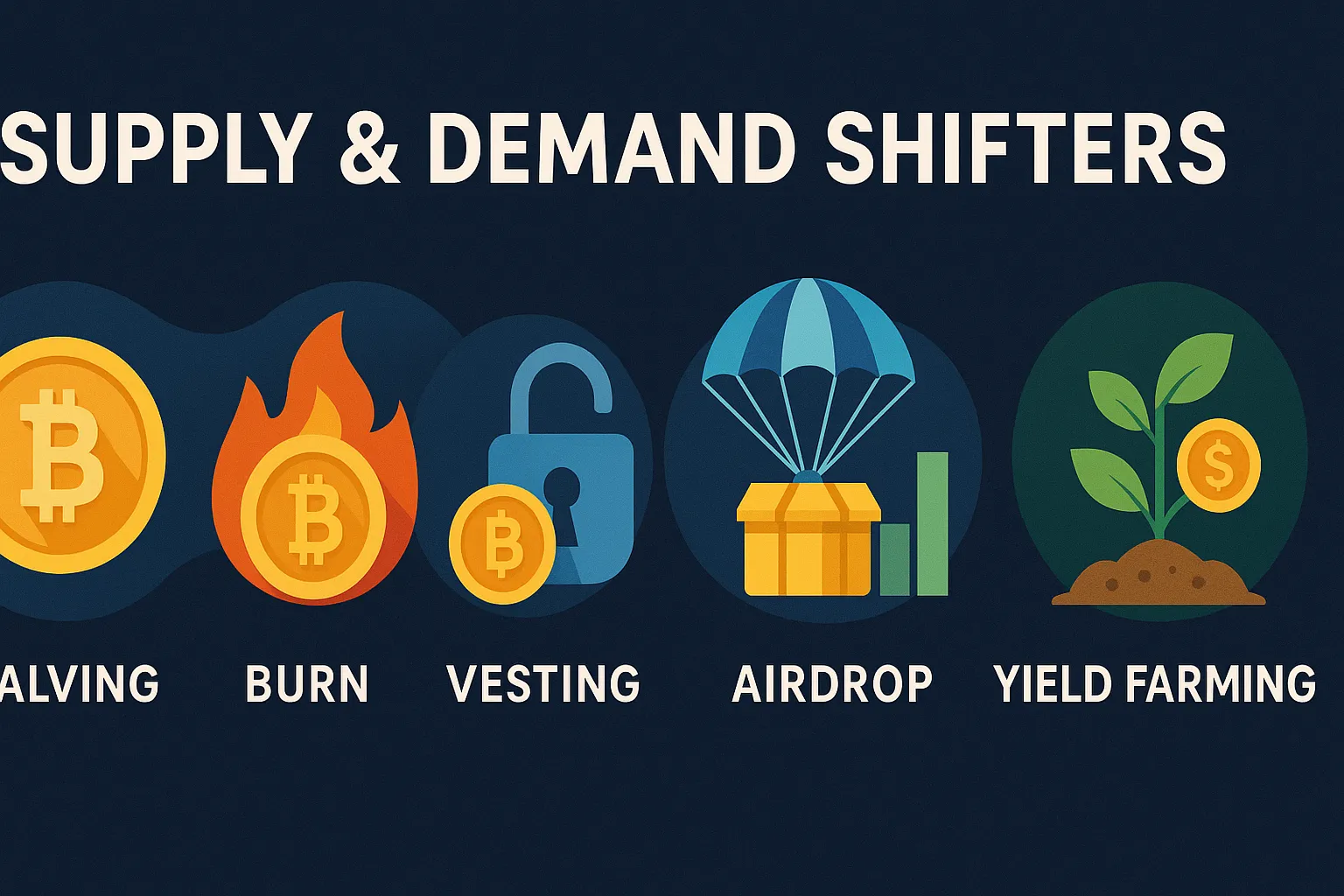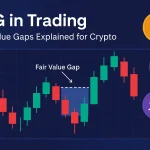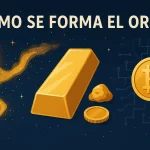Supply & Demand Shifters in Crypto Tokenomics
Decoding Crypto Supply and Demand Drivers: What Moves the Market
Ever wondered what causes a token’s price to spike or plummet? In crypto, on-chain events don’t just whisper—they shout. From Bitcoin’s halving cycles to unexpected airdrops, each mechanism influences how much of a token is available or actively sought after. To stay ahead of traders and developers, understanding these “supply and demand drivers” is essential. Let’s explore each one.
Bitcoin Halving: The Original Supply Shock
Every four years, Bitcoin reduces miner rewards by half. This event exemplifies a fundamental supply-shifter: fewer new bitcoins flooding the market. Traders anticipate this months in advance, often fueling a buying frenzy ahead of the halving. The core idea: reduced supply growth creates scarcity. If you’re designing a token, mimicking this predictable reduction—or offering early supporter bonuses—can generate similar market tension
EIP-1559 and the Art of Controlled Burns
Ethereum’s EIP-1559 introduced a burn mechanism: a portion of every transaction fee gets destroyed. This effectively reduces ETH’s circulating supply, especially when activity surges. I’ve seen charts climb as fees increase, turning each transaction into a mini supply shift. Incorporating a burn feature into your protocol—linked to fees or other activity—can foster a sense of collective ownership: “I helped make this token rarer,” boosting demand.
Token Vesting: The Quiet Demand Pump
Team tokens or early investors’ vest schedules are often the forgotten ones and can significantly generate demand when they unlock. Bunched-up tokens become liquid in a single overnight, and owners will sell or re-stake them. Prefunding and disclosing vesting schedule dates ahead ensures stability and builds strategic demand waves. Preannouncing future unlocks can encourage dollar-cost averaging by investors into upcoming availability.
Airdrops & NFT Mints: Flash Demand Surges
Airdrops & NFT Mints: FOMO-Driven Short-Term Demand
Free giveaways—airdrops and NFT mints—ignite short-term demand spikes fueled by FOMO. Yet, giving away free tokens sometimes reduces perceived value. Coupling limited-edition NFTs with exclusive governance entitlements or awarding rewards based on activity can keep demand going strong long after the drop. These strategies promote continued participation and interest.
Listing Events & Protocol Updates: Market Catalysts
Listing on a major exchange or a protocol upgrade can shift supply and demand overnight. Listing a token on a premium exchange, for example, can make trading volume shoot through the roof. Timing announcements for supply-cutting events like token burns or vesting schedule delays is the secret to making them more effective. Upgrades that change minting or burning rules have the same effect, putting you in control of supply dynamics tactically.
DeFi Incentives: Yield Farming & Staking Drivers
Yield farming and incentive staking are powerful demand pullers. High APYs attract in capital inflows, but they slow down as rewards decrease. The secret is to design a reward decay curve: high rewards in the beginning to attract early adopters, then gradually reduce. This rewards the early birds while preventing the surprise of instant sell-offs when rewards decrease.
Conclusion: Crafting Sharp Tokenomics
From my experience, supply and demand drivers are aspects that you can create on purpose. Combining predictable supply declines—like vesting, burns, and halvings—with timely boosts in demand—like yield rewards, listings, and airdrops—allows you to play with market sentiment. As you build or consider a token, plan these “shifters” on your calendar for optimal effect.
FAQ
What is a supply shifter?
A mechanism or incident that alters how quickly tokens are added or taken away from supply—examples are vesting unlocks, burns, or halvings. They directly impact scarcity and move prices.
How does Bitcoin halving impact supply?
It halves miner rewards, slowing new BTC supply, which helps to boost scarcity and is often followed by positive sentiment.
What is the burn mechanism of EIP-1559?
It burns a fraction of every transaction charge, reducing the circulating supply of ETH over time, thus the deflationary pressure.
Why do airdrops and NFT mints have such strong influence?
They create instantaneous demand spikes by offering inexpensive or worthless assets, especially if tied with interaction and community engagement, promoting sustained interest.
How do vesting cause a token to stabilize?
Spreading out unlocking avoids huge sell-offs all at once. Clear vesting timelines and disclosure allow setting market expectations and easing demand fluctuations.




